Category: KS2 Language Base
Do All Metals Conduct?

This morning we were learning about conductors and whether all metals conduct the same. We tested this by getting a metal wire and joining it to a light-bulb. We then used a strip of paper which had numbers from 1 – 10 and we held it above the bulb to see how bright it was. We used the pieces of paper to see if the light is brighter or darker. We found that a copper wire was the best metal.

.
Home Learning 12th Oct – 24th Oct
Will it fold or will it not fold…that is the question!
Question:
Is it possible to fold a square or rectangle in half…so that one half falls exactly on the other half?
We are looking at how to fold squared and rectangular paper to get two exact halves. This is called s_ _ _ _ _ _ y.
Could your child explain what symmetry means? Could they use words or a demonstration to explain it to someone who didn’t know?

Beat vs rhythm
Can you explain the difference between a beat and a rhythm? In music, our year 3 children are learning the difference. Today, we learned a poem to help us remember:
‘The beat stays the same,
The beat stays the same,
But the rhythm, fits in with the words.’
Say this rhyme whilst keeping a steady beat – either clap hands, pat thighs or stamp feet. When you get to the rhythm, you have to clap/pat/stamp in time with the words.
The mystery of the old, large keys…
Some old and rather large keys appeared in our classroom this morning… Mrs Jones set us the task of asking questions about them using What?, Where? , Who?, When?, Why? and How?
Tomorrow we will be using our imagination to take us through the door that each key opens…and we wonder where that will be and what it’ll be like on the other side of the door!
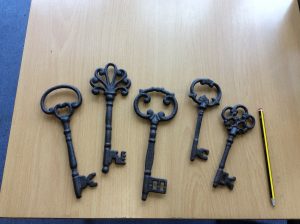
Positional language
We’ve been applying what we’ve learned about right angles to turns in a circle. Here we are using compass points, clockwise and anti-clockwise to tell each other which way to turn.
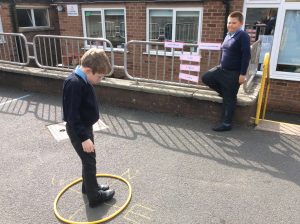
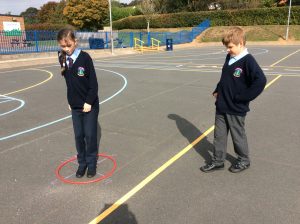
Do All Materials Conduct?
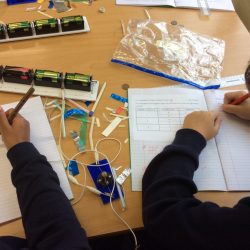
We did science learning about whether all materials are conductors. We used some wires to light up the light-bulb and used different materials to see if it did light up the bulb or not. We used: metal, wood, plastic, a paperclip and a metal coin. We found out that a metal coin can light the bulb and that plastic can’t light up a bulb. Wood can’t light up a bulb but a metal paperclip can light the bulb.
Written by the Year 3 & 4 scientists in LB2.
Home Learning
This week’s Home Learning has been sent home today (Fri 14th). Please send in completed Home Learning anytime next week – the first 5 completed and returned will get a sticker.
The final date for return is Wednesday 26th September.
Also, please sign and return the ‘E-Safety’ form and return to school asap.
Thank you.
Primary colours
We were finding out how to make secondary colours from the three primary colours 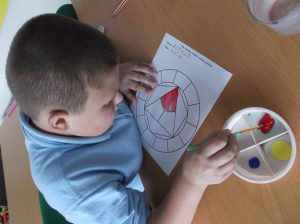
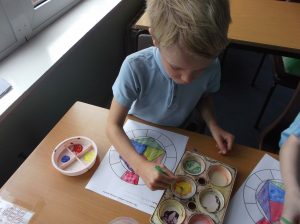 for an artist’s colour wheel. If you mix blue and red you make purple. If you mix blue and yellow you make green and if you mix red and yellow you make orange.
for an artist’s colour wheel. If you mix blue and red you make purple. If you mix blue and yellow you make green and if you mix red and yellow you make orange.
Amazing Adjectives!
Just how many different adjectives can you think of to describe a noun? This was our challenge in literacy this morning. We played a listening game where we passed around an object and then had to think of a word, words or even a phrase to describe the object. It was a challenge to think of a different word if someone said the word we were thinking of! For our VCOP board, our class task was to describe the skull of an animal. We had words like delicate and breakable which are super! Our words and phrases are now around the skull on the VCOP board. Well done everyone!

